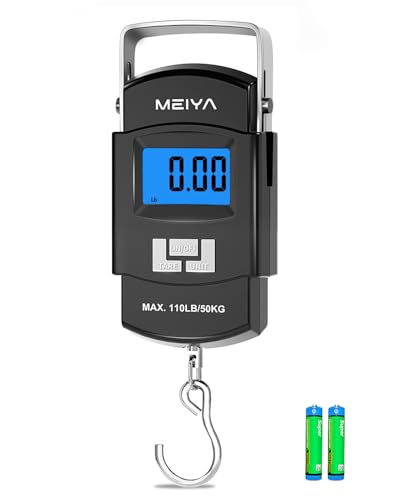After having a good day on the Cranberry River, I quickly drove over the mountain to visit the Williams River driving east from Dyer. The road parallels the river for miles and miles, with most of it open for fishing. I didn’t see many people taking advantage of that until I crossed over the river at the bridge marking the start of the stocked section. This is road fishing at its finest. The road is close to the river, and there are plenty of turnoffs to allow anglers to access any section of the river that looks good.
As I drove down the road, I was perplexed at the number of fishermen I saw standing around who were staring intently at the water. I did not understand what was going on until a few miles later, I came upon a line of vehicles backed up behind the stocking truck. They were actually doing it right then! I’d never seen a stocking operation before, but I watched for a bit as a worker dipped his net into the truck and pulled up nice-looking fish to be passed down to workers who inserted them into the river. I’m sure that the line of trucks was for all the volunteers because when the stock truck left, they also left. I was still there.
So, I pulled into the vacated parking spot and wandered down to the river to see what I could see. Whatever they had put into the river had disappeared. I saw no shadowy forms skittering around looking for a new home. Certainly, they were not victims of predators — even humans — in the short period of time between the truck’s departure and my arrival.
That said, I tried to pick up one or two of these guys anyway. Knowing that immediately after stocking, trout are not interested in natural food, I resorted to brightly colored woolly buggers in an attempt to entice a reaction strike. I worked that strategy up and down the river for about an hour with no results. With a shrug of my shoulders, I chalked it up to experience, got back in my truck, and headed to the catch-and-release area, which was my ultimate destination anyway.
This section of the Williams River is wide and does not have a distinguishing structure. That is not to say that it’s not scenic. Granted, there are plenty of trees lining the banks and a few plunge pools, but generally the river is broad and nondescript. It was clear that the stock truck was visiting the places where the river was deep enough to allow the fish to survive for the remainder of their short lives.
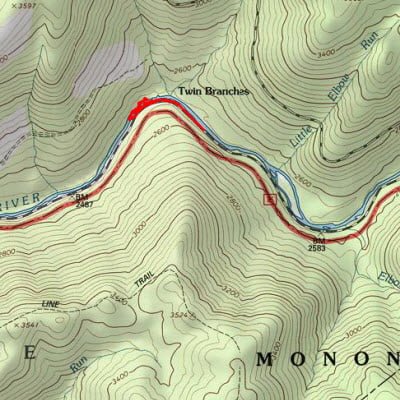
I’m not a real road fishing guy, so I did not really enjoy this part of the Williams River. I know that there are a lot of people who need easy access to be able to continue to fish, but that’s not me… yet. Maybe when I’m in my 60s I will be grateful for roads that run next to rivers, but for right now I’ll stick to the places where I have to walk a little bit to get to the action.
Williams River Trout Fishing Bottom Line: If you need easy access as a result of your inclination or your ability, this is a good destination during the stocking season. West Virginia stocks this section in October and again starting in March through May.
Date Fished: 10/13/2009
Getting There: From Rt 150, turn west on Williams River Road towards Dyer, WV. The road follows the river for miles
Google Local Coordinates: 38.341791,-80.374947
Secrets Revealed? No. This is a very public location that is documented in the following places in addition to the West Virginia DNR website and stocking plan:
Flyfisher’s Guide to Virginia
Mid-Atlantic Budget Angler
Tell a friend about this article by clicking on this link
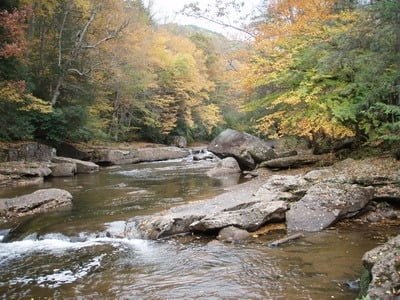
The area at the bend was the best looking
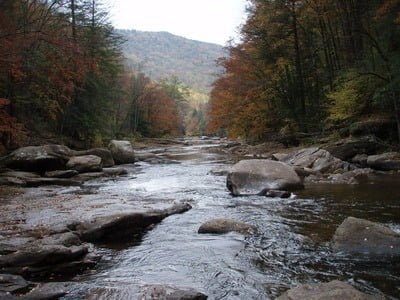
The bottom of the river is mostly flat rock
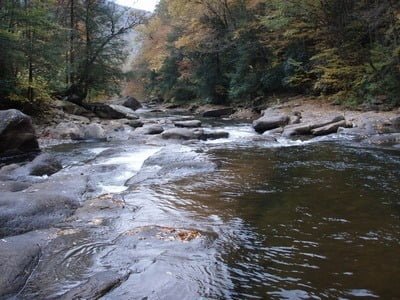
Find the gradient breaks for some nice pools
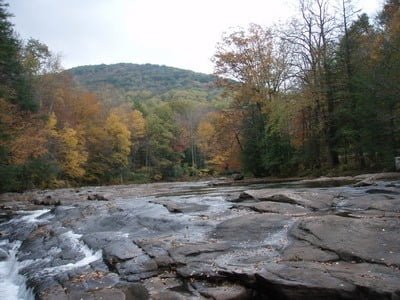
Most of the river looks like this – flat and featureless
Unless stated otherwise, this article was authored by Steve Moore


